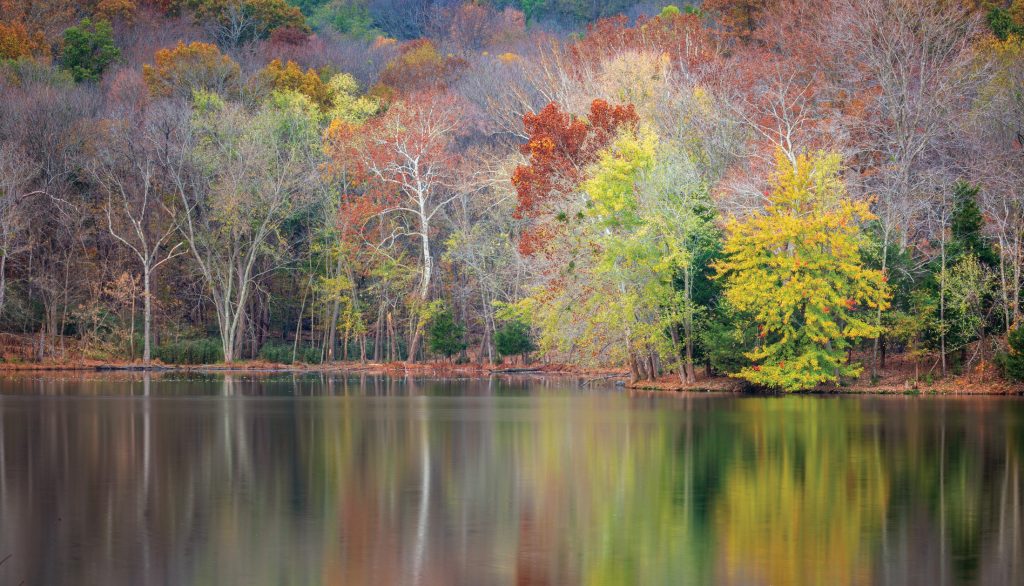“Fall Color Reflections, Radnor Lake” by Robin Conover Canon EOS 5D Mark III EF 100–400 mm 4.5–5.6 L lens at 100 mm ISO 100, fl22 at 1 second, Gitzo tripod
Albert Camus penned one of my favorite quotes: “Autumn is a second spring when every leaf is a flower.” I think of his words every year as I begin to see tiny dots of red, yellow and orange within the solid green canopy of late summer. I see fall as nature painting its own tapestry, weaving together each speck of color, before it falls to the ground as winter’s gray days arrive.
There are a few weather variables you might encounter and a few photographic techniques you can use that, when combined, will help you capture the stunning fall colors.
My preferred weather is a clear to slightly overcast day with minimal to no wind. My favorite times of day are during the golden hours when the light is warmer and at a low angle—generally an hour after sunrise and an hour before sunset.
Photographically, you will want to consider shutter speeds ranging from slow to fast and f-stops ranging from small to large to attain your desired results.
In this image, the sun was low in the sky, casting a warm light across the scene. Thin clouds diffused the sun just enough to prevent too much contrast and harsh shadows.
Choosing a small aperture of f22 to get a high depth of field and an ISO of 100 for the least amount of digital noise, I was left with a slow shutter speed of 1 second. You might not realize this, but a lot can move in half a second, which can be good and bad for photographs. I was concerned the leaves would be blurry if there was any movement. To be on the safe side, I tried exposures with faster shutter speeds and larger f stops.
The exposure described proved to be the best combination of all factors but was only possible because the air was very still. The leaves weren’t moving, but the water was slightly rippling. The slow shutter speed helped to render the water as a beautifully blurred watercolor and not a sharp mirror image.
You would want to choose higher shutter speed of 1/250th of a second or faster to stop action of leaves, animals or people moving in your images.
Must-haves for your fall color shoots:
- Sturdy tripod—Mounting your camera on a tripod will cut out any camera movement that results from hand-holding.
- Remote cable release—This prevents vibration caused by your finger touching the camera body to release the shutter.
- Circular polarizing filter—This filter cuts out glare, making colors richer and more saturated. It’s the only filter I own.
- Weather permitting, late October and early November are perfect times to capture Tennessee’s fall. Get outside, and enjoy the show!



